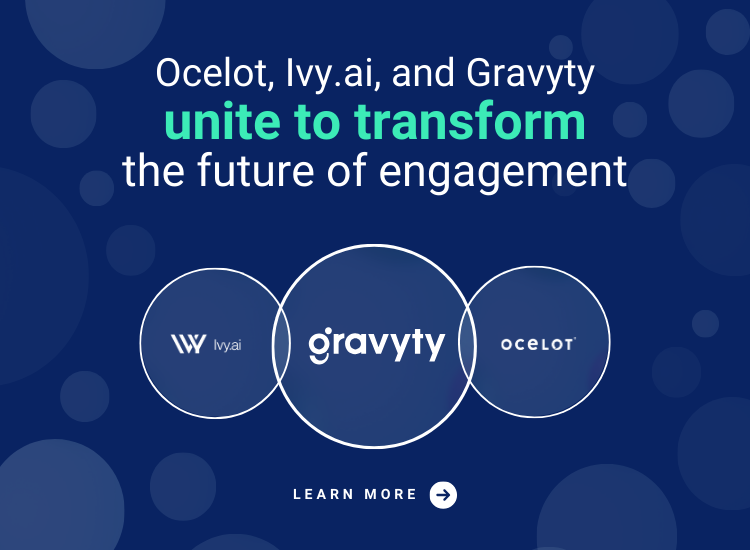Cloud-based Software-as-a-Service (SaaS) technology provides a number of benefits to educational institutions, including secure data protocols and regular software updates.
With the increasing availability of artificial intelligence (AI) technology and its potential to harness big data to drive efficiency and real-time decision making, many colleges and universities are exploring ways to use AI within their existing technology ecosystem to impact the student experience.
An emerging approach is AI as a Service (AIaaS): the AI partner provides not just the “AI” technology platform but also manages the “AI” so that the college does not shoulder the burden of routine maintenance and ongoing training.
Four Key Benefits to AIaaS
1. Speed to Launch / Ease of Maintenance / Technology Advances
An AIaaS provider can draw on its experience with similar institutions to quickly spin up a fairly robust AI tool with little effort from the school. On an ongoing basis, an AIaaS partner can ensure that the AI keeps learning from interactions. Colleges and universities provide their content; the AIaaS partner handles the rest. And when the AIaaS partner provides federal and state regulatory content as part of its service, it’s a killer combination. Finally, an AIaaS partner keeps investing and improving upon the technology and pushes those advances along to all of its school partners.
2. Ability to Leverage Big Data
An AIaaS partner can pool anonymized data and learn across a whole network of instances while still allowing for customization. In this scenario, the institution may not have 100 percent control over the AI, but it will benefit from taking more of a big-data approach with machine learning, which can bring more depth and consistency to AI actions.
3. Long-term Risk Mitigation
Building AI models that rely exclusively on your institution’s ongoing efforts may sound exciting and interesting at first blush. But without the appropriate long-term level of focus, supervision, support, and maintenance, the AI will decay over time. As the number of AI tasks increases and becomes more complex and varied, AI requires both data and supervised machine learning to properly understand the nuances of human thinking and interpretation to effectively turn it into action. Using an AIaaS partner dramatically reduces an institution’s risk by leveraging learning from across all college and university partners using the technology.
4. Being a Part of a Larger Community
An AIaaS partner with a common, multi-tenant shared platform that supports a multitude of institutions is a unique community. This approach ensures that the advances and learning at each individual school benefit the broader community of users. An AIaaS partner can facilitate a community that enables clients to effectively collaborate, share best practices, share content when it’s not proprietary and help each other with tools that build upon the success others are having.
AIaaS in Practice
At Ocelot, we focus exclusively on higher education and take a big data AIaaS approach to supporting colleges and universities. Ocelot’s AI is currently based on over five million student interactions and over a hundred thousand questions across our entire network of schools. Individual schools supply their own content to the platform, but they do not need to build their own dataset or supervise their own AI. Instead, the AI for each school is learning and training from all student interactions across the entire Ocelot network. The “intents” and “entities” are built from datasets that are much larger than what a single school can offer.
AI Chatbots as a Case Study in AIaaS
In general, AI chatbots have different levels of sophistication. Some chatbots are search and index bots. Some are point and click bots or AI powered bots. Some are a combination of these options. All AI powered chatbots require some level of human supervised machine learning. Bots need to be trained to understand the “intents” (the purpose or goal of a user’s input) and “entities” (a term or object relevant to the intent) in order to properly classify a question. Once a question is classified, the chatbot is able to understand what users are asking and can then return a direct match (“response”) to their question.
Ocelot has a dedicated AI Conversation Design team that manages the AI and general content for our clients. The backend of the Ocelot chatbot is powered by a combination of natural language processing (the process of organizing language into structured data), natural language understanding (teaching machines reading comprehension), and deep learning and neural networks (understanding relationships in data). It is backed by a combination of proprietary Ocelot technology and IBM’s Watson platform.
The Benefits of the AIaaS Approach
An AIaaS model enables chatbots to have more impactful conversations with students that can range from admissions and registration to student life and housing. In other words – Ocelot does the heavy lifting when it comes to managing the technology and building the AI algorithms, so its higher education partners can focus on creating the most impactful service and content for their students.








